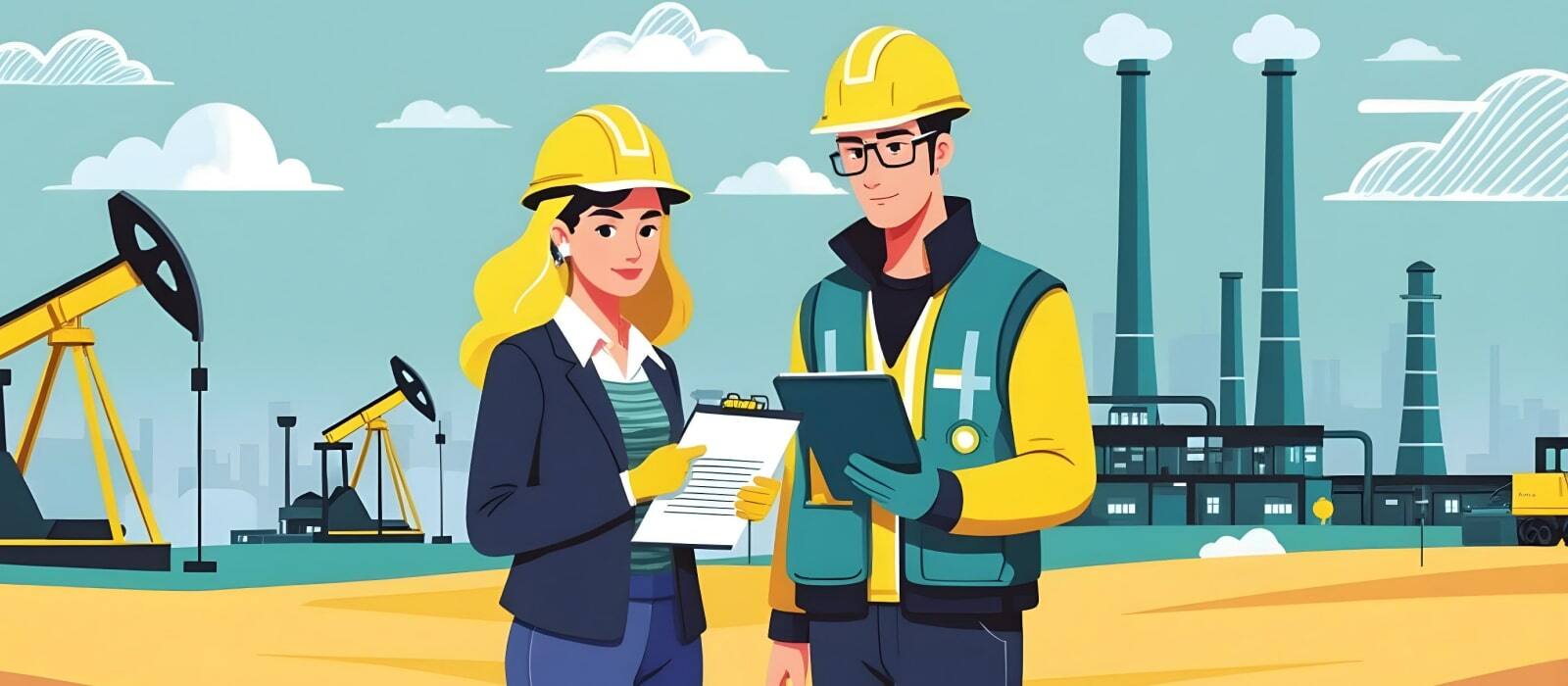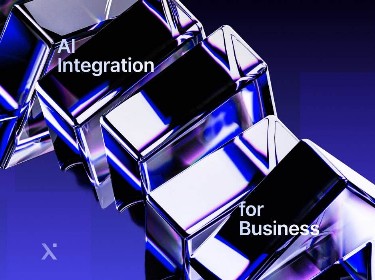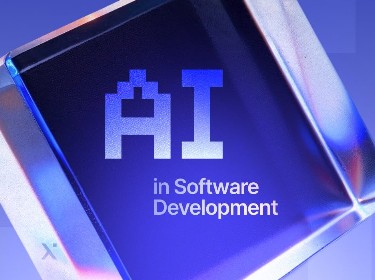As computing power and software complexity grow, so does the potential for artificial intelligence (AI) to solve the world’s problems. Although most people don’t associate the mining industry with such things as advanced systems technology, AI is changing the narrative.
Indeed, businesses in the natural resources (oil, gas and mining) industry are investing heavily in artificial intelligence in order to grow, keep up with tech-savvy competitors, and ensure their future prosperity. Yet, there are also some more specific reasons why AI is such a promising development.
The key point is that the sector requires constant innovation if it is to optimize production, lower costs and, most importantly, improve safety for workers. Artificial intelligence and machine learning technologies can make a big difference and help businesses adapt even in the face of unpredictable events.
Now it’s time to take a closer look at each aspect of the industry and see how exactly AI and machine learning can transform it.
The mining industry: what’s included?
In the United States, the oil and gas sector consists of the search for, extraction, beneficiation (the removal of impurities), and processing of naturally occurring solid resources from the earth. Examples of these essential sources of raw materials include oil, gas, metals, and minerals, which are used in buildings, chemical industries, and much more.
It’s only recently that oil and natural gas extraction has been completely separated from the mining industry. However, the application of AI is equally appropriate in both sectors.
Machine learning impacting the oil, gas and mining industry
If your business is focused not only on staying afloat but also on growing and competing with market leaders, it must be technology-driven. Slowly but surely, the oil, gas and mining industry is adopting the same approach. Here our oil and gas software development company will share what machine learning can do and what problems it solves in this highly competitive sector.
Production optimization
The first and very important use case for machine learning relates to discovery processes. Machine learning applications enable computers to quickly and accurately filter out signals and noise in seismic data. Based on the data collected and analyzed, accurate geological models can be created.
This way, operators are able to predict what is below the earth’s surface before they start drilling. The use of AI also optimizes the drilling operations. AI learns from past operations and acts like a human: the more data and knowledge it receives, the more it improves its abilities. To make far-reaching changes in workflows, businesses need to deploy more machine learning across the industry.
This includes related sectors like mining, where web development services for the mining and precious metals industry can leverage machine learning to create platforms for optimizing resource allocation, tracking extraction processes, and even predicting market trends.
Analytics and prediction
Analytics can be considered a core AI capability. By analyzing massive amounts of data, it makes predictions and therefore helps find problems in the production process as well. The use of a computer vision system can check product quality and detect defects such as improper threads in pipelines or faults in machinery. It’s worth noting that defects found on a production line usually end up costing a lot more than the AI implementation does. Thus, artificial intelligence can help avoid such problems and significantly reduce costs.
The next benefit follows from the previous one: machine learning and AI in oil and gas can maintain the operation and performance of machines. This is called predictive maintenance.
Machine learning algorithms process data from sensors installed on the equipment. They then analyze all the information they need and compare it to the ideal performance data in the database. If a problem occurs, technicians will be immediately alerted. They will repair equipment and restore it to maximum performance.
In addition, using AI and machine learning algorithms that analyze the energy buyer market can enable companies to know their customers better and to buy and supply energy at affordable prices.
And there’s more! With AI and machine learning, we can predict operational outcomes. AI software can collect different types of data, such as weather information and reports. As a result, company specialists receive graphs that illustrate current trends in their workflows. They can then quickly and easily interpret this information. This in turn speeds up the search for solutions.
Workplace safety
No one has cause to worry that machine learning technology will soon replace manual labor entirely. Instead, it will make skilled workers more efficient, spare them unnecessary tasks and, most importantly, improve workplace safety.
The risk of injury in oil and gas plants and mines is extremely high. Failure to comply with safety rules and protocols can lead to irreversible damage to health and even death, and the company will receive financial fines (which, however, is incomparable to human life).
AI computer vision solutions can monitor the workplace. They can alert management even about the smallest of regulatory deviations. However, this shouldn’t be regarded as a “Big Brother is watching you” scenario. The only purpose is to keep workers safe from serious harm.
Take a look at how AI is being used throughout different industries
Application of AI in REE mining
![]()
First, what is REE mining?
REE stands for “rare earth elements”. These play an integral part in our everyday lives. They contain special elemental properties that are used to create everything from semiconductors to the microchips in our laptops.
Challenges
REEs are essential for renewable energy, especially in the creation of wind turbines for offshore power. The future of US offshore wind energy relies on a consistent supply of REEs. The US and many other countries are reliant on Chinese REE imports. Unfortunately, Chinese litigation is restricting mining in many locations, meaning exports may become unstable.
AI-based solutions
There are five phases within REE mining: prospecting, discovery, development, operation/production, and reclamation. In the operation/production phase companies answer the question of how to mine, mill, and process the discovered ores. It is here that AI has the most impactful presence.
The Kore Geosystems company won $500,000 in funding for their idea of leveraging AI in combination with installing measurement instruments onto drill rigs for real-time automated geological data acquisition and decision making. This will fast-track exploration campaigns and vastly reduce costs. For Chinese mining companies, this equates to efficiency and informed decisions about which plots of land they will use for drilling and which plots they will reserve.
On a similar note, Ozius Spatial, a company utilizing machine learning, has figured out practices to better prevent environmental destruction – the root cause of Chinese restraints on mining. By deploying satellite imagery and drones, companies don’t have to be on-site and can use remote-sensing algorithms, supported by machine learning, to enable them to assess large tracts of land.
Application of AI in copper mining
Copper mining has remained one of the main industries in the US ever since the emergence of the northern Michigan copper region in the 1840s. Today, the USA is the fifth largest copper producer in the world after Chile, Peru, China, and the Democratic Republic of Congo.
Challenges
Volatile commodity prices are a major concern for the copper mining sector, which results in pressure on profitability. Another challenge is determining the maturity level of the mine. Later in its life span, a mine yields lower grades, while transportation distances lengthen.
AI-based solutions
In mining, fast and accurate decision-making is crucial. By employing insight-driven decision-making, enabled by AI, companies can substantially boost their profits.
A Deloitte-Norcat report highlights how AI can dramatically improve efficiency. Companies can use AI to eliminate errors and quickly derive patterns from large amounts of data. This increases the consistency of positive returns, which are usually subject to human error.
This technology brings with it the promise of a closed-loop, thanks to a set of mechanical or electronic devices that don’t involve human interaction, since they themselves automatically regulate the process to the desired state or setpoint. This advance is critical to the copper mining industry, and not only because it cuts costs and eliminates errors. It also allows companies to establish standards of best practice and helps them to monitor each operator so that they can preemptively act on decline in performance and drive forward workforce excellence.
In 2018, McKinsey AI data scientists worked with Freeport-McMoRan, a mining company based in Arizona. The McKinsey employees facilitated the creation of a custom-built AI program in mining that looked for operational inefficiencies and was loaded with three years’ worth of operating data from the mill. The impact was hugely impressive: copper-ore concentrating mills sustained a faster pace with no loss of efficiency.
In fact, Freeport-McMoRan reported that as time progressed and they became more familiar with AI techniques and analytics, they could scan vast amounts of data, identifying even more operational changes that might improve performance. Sean Buckley, McKinsey Partner and Analytics Leader, said,
“Thinking about ore clusters in terms of data from the mill’s instruments, rather than classifications from traditional geology, was a major mindset shift — and it opened many new possibilities for improving performance.”
This case study of a company that embraced AI in copper mining very early on proved to the entire industry that the technology had the capability to transform bottom lines and much more.
Application of AI in coal mining
![]()
The coal industry has experienced five years of volatility. In the United States alone, the industry’s market size has declined 8.1% per year on average between 2015 and 2020. This was due to fluctuations in coal prices, declining production from mines, and a general trend towards cleaner and less expensive energy alternatives. But volatility is not the only difficulty facing coal mining.
Challenges
The most prevalent problem in coal mining is safety. Black lung and silicosis are two highly damaging health conditions for coal miners due to the gasses and chemicals they are exposed to daily. The issue goes well beyond illness. Miners the world over are constantly in danger of gas, water, fire, structural collapse, and dense dust.
AI-based solutions
Artificial intelligence in coal mining can go a long way in improving workers’ safety.
In hazardous environments, there need to be systems in place that will reduce the number of people who are active in the mines at any one time.
In every coal mining plant, there are operators who conduct repetitive but judgment-based decisions that ensure the scrapers mine the right locations. At a mine in Inner Mongolia with an annual output of 21.7 million tons, 900 people are needed to act as operators. However, AI and a neural network mean that many of these operators don’t need to be physically inside a mine.
Mine Brain, Huawei’s big data-powered solution, brings impressive safety improvements by optimizing workplace presence and control. By using Mine Brain, coal mining companies can input data from previous years and allow the product to develop thorough algorithmic capabilities to operate the scrapers without needing human interaction or involvement from within the cave.
In addition, Huawei’s AI solution can also protect other workers inside the mines by alerting them of any changes in the workplace environment such as gas levels. Similarly, computer vision can warn of people working in front of shears or spot missing hydraulic support guard plates.
Application of AI in marine mining
The ocean floor contains a host of valuable metals, but marine mining has not always been very successful. Today, countries including China, Britain, Belgium, Germany, France, and Japan are engaged in the exploration of deep-sea resources. However, these activities bring some obvious problems.
Challenges
There are 10 billion tons of polymetallic nodules in the world’s ocean floors, rich in minerals like gold, copper, and cobalt. As of January 2020, the International Seabed Authority (ISA) has entered into 30 contracts for deep-sea mining around the world. These involve exploration for polymetallic nodules, polymetallic sulphides, and cobalt-rich ferromanganese crusts. ISA is expected to issue regulations for mining in the ocean by 2021. But the biggest challenge confronting companies is the disruption from environmental impact assessments.
AI-based solutions
Kraken, a company based in Germany, has already received $900,000 in contracts for their SeaVision product. The foundation of this underwater vehicle is AI and it addresses many of the challenges that underwater mining operations face.
The SeaVision AUV (Autonomous Underwater Vehicle) uses scanners and sensors while crawling at the bottom of deep underwater seabeds, identifying safe mining locations. The SeaVision system has an autonomous obstacle avoidance system and will identify species in a benthic (the bottom of a body of water) habitat, preventing its destruction. Over time, it begins to add to its own database and improves its ability to locate optimal undersea mines.
This type of application will significantly reduce the environmental footprint associated with sea mining and will provide the basis for meeting industrial subsea activity regulations. The sensors and scanners on the AUVs ensure that the geography of the seabed in question won’t lead to algae bloom or habitat destruction based on elevation levels. AI enables this task to be done on-demand and remotely, which helps not only the environment but also employees.
Application of AI in space mining
![]()
Astrophysicists have said that near-Earth asteroids (NEA) contain over 42 trillion tons of commodities such as nickel, gold, platinum, and more. Asterank, a scientific and economic database of over 600,000 asteroids, suggests that there are over 500 asteroids that are worth more than $100 trillion. Tapping into even a small fraction of this would be worth millions. This sounds fascinating — but is it achievable?
Challenges
Russia and the US have expressed interest in “intergalactic mining”, and the US has passed congressional bills that allow companies to own, extract, and sell resources from space. However, the obvious challenge is the actual physical extraction and haulage of resources to and from space. Most experts and scientists expect AI technologies to be heavily present in every aspect of space mining.
AI-based solutions
Artificial intelligence algorithms are pivotal to successful space mining, where a delay of just a few minutes can be disastrous and costly. Getting to the asteroid is one of the most difficult tasks. But AI allows the payload trajectory for the spacecraft to be plotted out much more accurately than it would be based on previous data. Once it’s on the asteroid, the spacecraft won’t require a constant connection to human users and can conduct operations remotely while also identifying and avoiding environmental hazards.
The Mars rover leverages many of the practical uses of AI that can be employed in space mining. The most eye-catching is the ability to map out their surroundings without a GPS using visual odometry. The robot takes a sequence of pictures or laser scans and then analyzes them to define and remember its position.
Application of AI in oil and gas drilling and extraction
Oil and gas is another industry that has been extremely volatile in recent years. In the US, for instance, despite the growth in domestic oil and gas production, the average decline in the industry in 2015-2020 was 5.6%. Still, the industry remains very important for many countries, and innovations are needed for its continued development.
Challenges
The complexity and variety of the processes required to extract oil bring multiple challenges. To sustain their supply of oil or gas, many companies search for ways to extend the life of sites, while trying to avoid having to find and drill new locations. This approach requires high levels of maintenance where there can be no unplanned shutdowns, higher throughputs, and secure industrial assets.
AI-based solutions
Within the oil and gas industry, AI has numerous applications, but the two prime ones are in machine learning and data science. For companies which are’ monitoring complex internal operations, swift responses are critical. However, human operators may not always be able to detect every mishap – and this is where AI is much more capable and reliable.
Through machine learning, complex simulations can be run hundreds of times and predictive data models can discover patterns based on a plethora of inputs, improving the accuracy of predictions.
A practical application of this specific capability is the search for new development sites. Companies can gauge the risk of a new project before any plans are made, preventing environmental harm and economic consequences.
Data science in oil and gas puts AI to use to garner information and insights from existing data, using neural networks to link related pieces of data together. Companies can be helped to make more use of existing infrastructure, model future developments, and also identify tweaks that can improve bottom lines and ROI.
British Petroleum (BP) has already taken advantage of AI in its operations and ventures. Their AI-based solution links information together and defines the connections and workflows that contribute to a clearer image of the company’s underground assets. BP then uses AI neural networks to interpret the results in order to accelerate their activities.
Oil and gas giants already using AI
![]()
Here are a few globally renowned oil and gas companies that have already transformed their operations thanks to the introduction of artificial intelligence.
Royal Dutch Shell
Shell is among the early adopters of artificial intelligence. Back in 2015, the company became the first in the lubricants sector to launch an AI-powered service for customers. It’s called the Shell Virtual Assistant and provides information on the technical properties of the product, as well as information on where to buy lubricants and what package sizes are available.
Shell claims its AI-driven Shell Virtual Assistant processes over 100,000 datasheets for 3,000 products, understands 16,500 physical characteristics of lubricants and provides information on 18,000 different package sizes.
An additional big project by Shell involves preventative maintenance of valves, compressors, and other equipment. Since summer 2018, the technology has been deployed to 23 locations. Within another project, AI is helping the company find new sources of oil and gas.
ExxonMobil
In a recent project, ExxonMobil partnered with IBM to make its well development planning much more efficient using AI. Typically, seismic data interpretation takes from 12 to 18 months. In the process, it is necessary to scale the data to understand how the Earth has evolved in a specific part of the world.
The task becomes more difficult if experts don’t have a well-developed database. ExxonMobil has teamed up with IBM to significantly modernize this part of their workflow. An AI-powered platform for ExxonMobil has reduced data preparation time by 40%, and the planning time from nine months to seven.
Baker Hughes
Baker Hughes, one of the world’s largest oil field services companies, is also pursuing AI-powered innovation.
In 2020, Baker Hughes and C3.ai announced the launch of BHC3 Production Optimization. This AI-powered application enables operators to view production data in real-time, better predicts future production, and helps optimize operations to increase oil and gas production rates.
BHC3 Production Optimization also applies machine learning to data to detect anomalies, predict production, and prescribe actions that improve performance.
Additionally, in 2019, Microsoft announced a partnership with Baker Hughes and C3.ai. They set a goal to bring enterprise AI technologies to the energy sector through its Azure cloud computing platform. This will enable customers to simplify the adoption of AI-powered solutions designed to solve a range of issues, such as energy management, predictive maintenance, equipment reliability, and inventory management.
Early Obstacles
There are still several challenges, picked up by Deloitte-NORCAT following interviews with a plethora of companies on the future of AI in their systems:
- Poor testing methods due to the lack of consistency of high-quality data. Without this consistency, companies can’t train or generate actionable insights because there is a lack of quality data for the computer to base them on.
- Industry culture. Mining has never been noted for its systemized approach. As a result, there are difficulties incorporating large technology-based systems throughout the sector.
- Lack of tech-mining talent. Most mining professionals don’t focus on the computer or technology, but rather on patterns. Consequently, there aren’t many who can fill this employment gap and thereby allow AI to flourish within the industry.
Despite these few hurdles, the numerous aforementioned use cases prove that AI in the oil and gas sector is here to stay and will soon be a technology inextricably linked with this industry.
Conclusion
Artificial intelligence might not seem the most obvious technology to pair with the oil, gas and mining industry. But in the years ahead, AI may very well be the investment priority for companies wanting to see big advances.
The transformation from current computer systems to new technologies that leverage artificial intelligence has the potential to thrust the industry forward – in terms of saving lives, identifying lucrative positioning, eliminating errors, and much more. AI will make mining and similar work much safer while also boosting profits.
AI is the bridge between decision-makers and accurate data trends. It has the potential to revolutionize the mining and oil sectors and inject this well-established area of the economy with new life.
If you would like to cross this bridge and reach an exciting, AI-enabled new landscape, be sure to turn to an experienced developer who will advise you on the capabilities of the technology and create a solution that perfectly suits your needs.




